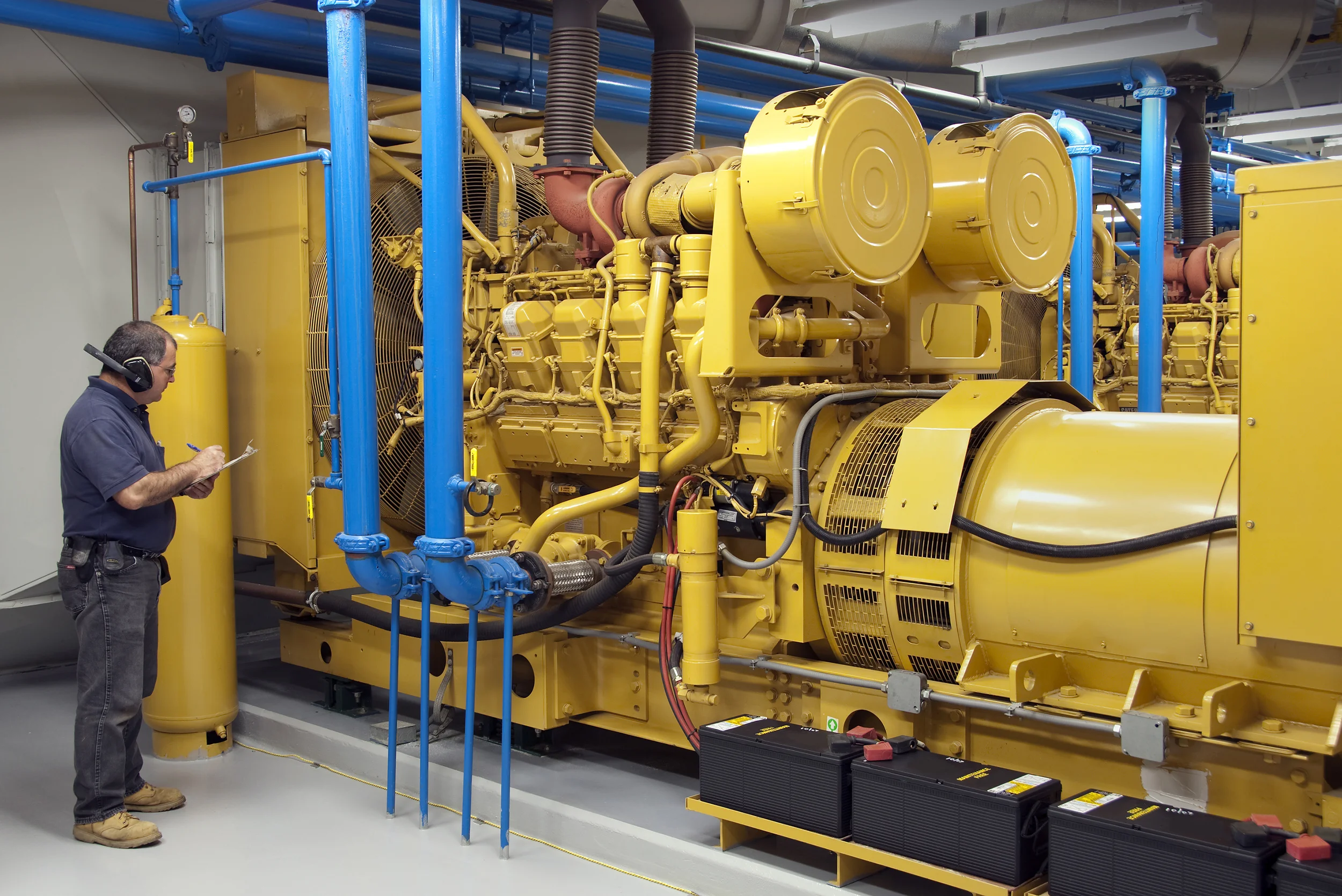Reciprocating engines
Reciprocating engines are reliably used across the world to generate electricity on a variety of fuels (natural gas, biogas, landfill gas, diesel, etc.). They range in size from the one in your car to ones that take up entire buildings.
Approximately 60-70% of the total energy input to the engine is converted to heat that can be recovered from the engine exhaust and jacket coolant, while smaller amounts are also available from the lube oil cooler and the turbocharger's intercooler and aftercooler (if so equipped). Steam or hot water can be generated from recovered heat that is typically used for space heating, reheat, domestic hot water and absorption cooling.
Heat in the engine jacket coolant accounts for up to 30% of the energy input and is capable of producing 200°F hot water. Some engines, such as those with high pressure or ebullient cooling systems, can operate with water jacket temperatures up to 265°F. Engine exhaust heat is 10-30% of the fuel input energy. Exhaust temperatures of 850°- 1200°F are typical with lower temperatures often found in low and medium speed engines, and higher temperatures in higher speed engines. Only a portion of the exhaust heat can be recovered since exhaust gas temperatures are generally kept above condensation thresholds. Most heat recovery units are designed for a 300°-350°F exhaust outlet temperature to avoid the corrosive effects of condensation in the exhaust piping. The minimum temperature can vary depending on the cleanliness of the fuel the engine consumes. (US DOE)
An additional potential benefit arises when using the engine's jacket water heat, which normally requires radiator fans to cool it. By using some or all of the heat from the jacket water, the electric load from the radiator fans can be reduced, resulting in cost savings from lower electricity bills.


